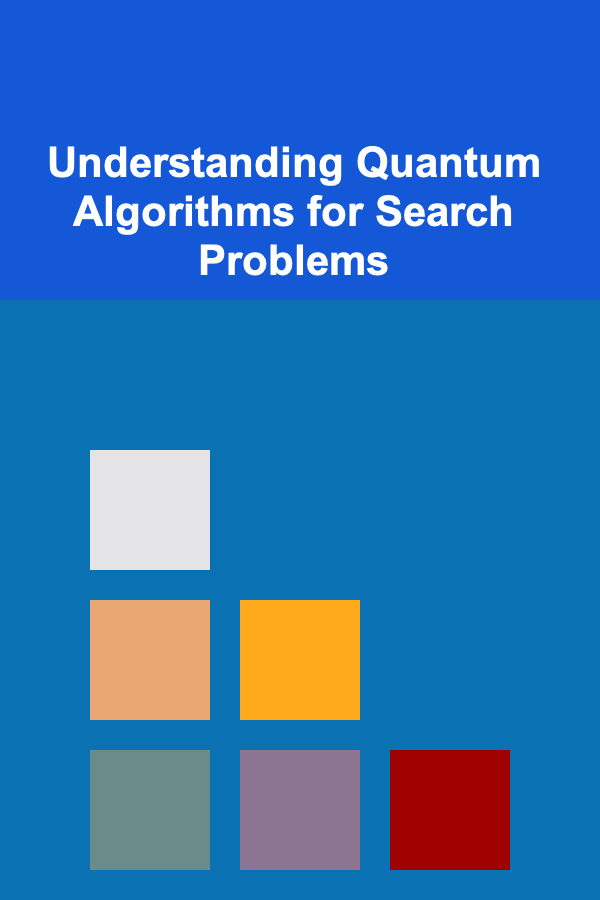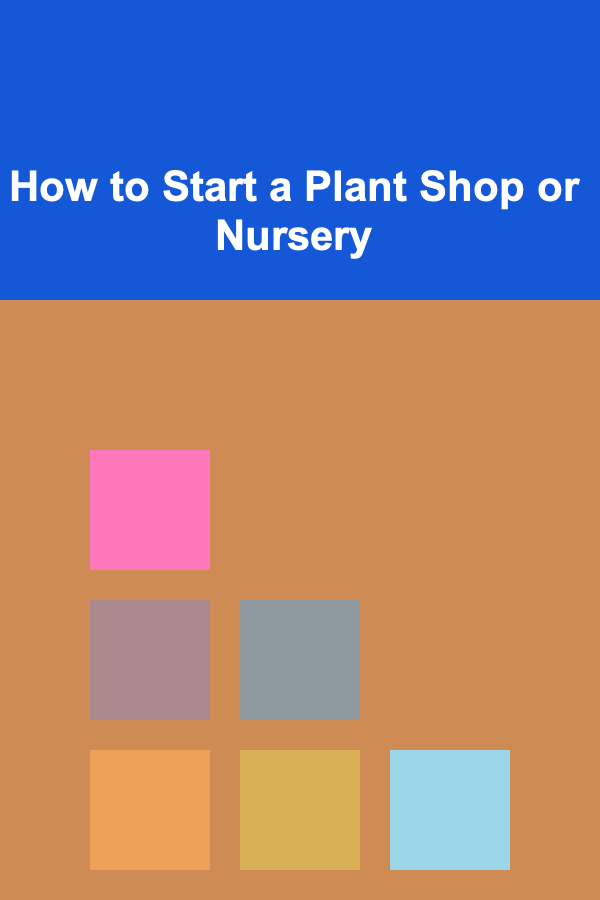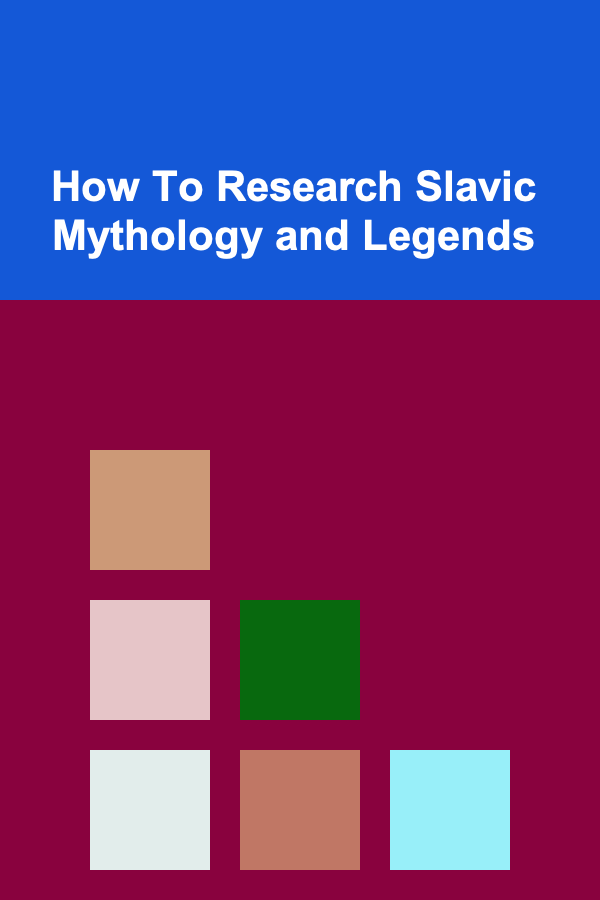
Understanding Quantum Algorithms for Search Problems
ebook include PDF & Audio bundle (Micro Guide)
$12.99$5.99
Limited Time Offer! Order within the next:

Quantum algorithms offer the potential for significant speedups over classical algorithms for certain computational problems. Search problems, where the goal is to find a specific item in an unsorted database, are a prime example. This article delves into the fundamental concepts behind quantum search algorithms, particularly Grover's algorithm, explaining how they work, their advantages, limitations, and the key ideas that make them effective.
The Classical Search Problem
Before exploring quantum solutions, it's crucial to understand the classical complexity of search problems. Consider an unsorted database of N items. The task is to find a specific item that satisfies a given condition (the "target"). In the worst-case scenario, a classical algorithm might have to examine every single item in the database before finding the target. This results in a time complexity of O(N), meaning the number of operations grows linearly with the size of the database.
This linear scaling becomes a bottleneck for large datasets. Imagine searching for a specific record in a massive database containing billions of entries. A classical algorithm would potentially need to check billions of records, which can be computationally prohibitive. This is where quantum algorithms offer a compelling advantage.
Quantum Computing Fundamentals: A Brief Overview
To grasp the power of quantum search, we need to understand a few key concepts from quantum computing:
- Qubits: Unlike classical bits, which can be either 0 or 1, qubits can exist in a superposition of both states. A qubit's state is described by a linear combination:
α|0⟩ + β|1⟩, where α and β are complex numbers and |α|² + |β|² = 1. |0⟩ and |1⟩ represent the basis states, analogous to 0 and 1 in classical computing. - Superposition: The ability of a qubit to exist in a superposition of states is fundamental to quantum computation. It allows a quantum computer to explore multiple possibilities simultaneously.
- Entanglement: Entanglement is a phenomenon where two or more qubits become correlated in such a way that the state of one qubit instantly influences the state of the others, regardless of the distance separating them. Entanglement plays a crucial role in certain quantum algorithms, though not directly in the core of Grover's algorithm.
- Quantum Gates: Quantum gates are unitary transformations that manipulate the state of qubits. They are the building blocks of quantum circuits, analogous to logic gates in classical circuits. Examples include the Hadamard gate (H), Pauli-X gate, Pauli-Y gate, Pauli-Z gate, and controlled gates like CNOT.
- Measurement: When a qubit is measured, its superposition collapses into one of the basis states (0 or 1). The probability of measuring a specific state is determined by the square of the magnitude of its corresponding coefficient in the superposition (e.g., |α|² for state |0⟩).
Grover's Algorithm: The Quantum Search Champion
Grover's algorithm is a quantum algorithm that can search an unsorted database of N items in O(√N) time. This quadratic speedup over the classical O(N) search is significant, especially for large databases. While not an exponential speedup like Shor's algorithm for factoring, the quadratic improvement makes Grover's algorithm practically useful in various applications.
The Core Idea: Amplitude Amplification
The heart of Grover's algorithm lies in a technique called amplitude amplification. Initially, all qubits representing the possible states of the database are put into an equal superposition. This means each item in the database has an equal probability of being selected. The key idea is to selectively amplify the amplitude of the target state(s) while reducing the amplitudes of the non-target states.
Steps of Grover's Algorithm
Grover's algorithm typically involves the following steps:
- Initialization: Create an equal superposition of all possible states. This is achieved by applying the Hadamard gate (H) to each qubit in the register. If we have
nqubits, representing a database of sizeN = 2^n^, the initial state is:(1/√N) Σ~x=0~^N-1^|x⟩ - The Grover Iteration (Oracle and Diffusion): This is the core of the algorithm and is repeated approximately √N times. Each iteration consists of two main steps:
- Oracle (O): The oracle is a quantum subroutine that identifies the target state(s) and applies a phase flip. It takes the state |x⟩ as input and outputs:
|x⟩ if x is not the target-|x⟩ if x is the targetThe oracle doesn't explicitly "know" the target; it receives this information through its implementation. The oracle can be viewed as a black box that performs this phase flip based on some condition. Implementing the oracle efficiently is often the most challenging part of applying Grover's algorithm to a specific problem. - Diffusion Operator (D): The diffusion operator, also known as the Grover diffusion operator, inverts the amplitudes about the average. It can be represented by the following matrix:
D = 2|s⟩⟨s| - Iwhere |s⟩ is the initial equal superposition state, and I is the identity matrix. In simpler terms, the diffusion operator takes the average amplitude of all states and then reflects each state's amplitude around this average. This has the effect of amplifying the amplitude of states that are already above average (including the target state, whose amplitude was flipped by the oracle).
- Oracle (O): The oracle is a quantum subroutine that identifies the target state(s) and applies a phase flip. It takes the state |x⟩ as input and outputs:
- Measurement: After approximately √N iterations, measure the qubits. The state that is measured will be the target state with a high probability.
Mathematical Justification
Let's delve into the mathematical intuition behind why Grover's algorithm works. The initial state |s⟩ is an equal superposition. The oracle flips the phase of the target state |w⟩. Let's define α as the initial amplitude of the non-target states and β as the initial amplitude of the target state. Since we start with an equal superposition, β = 1/√N and α is approximately 1/√N as well (more precisely, √(N-1)/N).
After one oracle application, the state becomes: α Σ~x≠w~|x⟩ - β|w⟩
The diffusion operator then inverts the amplitudes around the average amplitude. This process selectively amplifies the amplitude of the target state |w⟩ while reducing the amplitudes of the non-target states. The number of iterations required to maximize the probability of measuring the target state is approximately π√(N/M)/4, where M is the number of target states. In the case of a single target state (M=1), this simplifies to approximately π√N/4, confirming the O(√N) complexity.
Example: Searching for a Specific Number in a List
Consider a list of 8 numbers [1, 5, 2, 8, 3, 9, 4, 7] and we want to find the number 9. Here, N = 8, which requires n = 3 qubits to represent the indices of the list elements (0 to 7). Let's outline the process:
- Initialization: Create a 3-qubit register and apply the Hadamard gate to each qubit to create an equal superposition:
(1/√8) (|000⟩ + |001⟩ + |010⟩ + |011⟩ + |100⟩ + |101⟩ + |110⟩ + |111⟩)This state represents an equal probability of selecting any index from 0 to 7. - Grover Iterations: Repeat the oracle and diffusion steps approximately π√8/4 ≈ 2 iterations.
- Oracle: The oracle flips the phase of the state |101⟩ (which represents the index 5, where the target number 9 is located). So, the oracle transforms |101⟩ to -|101⟩.
- Diffusion: The diffusion operator inverts the amplitudes about the average. This step amplifies the amplitude of the |101⟩ state while reducing the amplitudes of the other states.
- Measurement: After 2 iterations, measure the 3-qubit register. The state |101⟩ will be observed with a higher probability than the other states. Since |101⟩ corresponds to index 5, we have found the location of the target number 9 in the list.
This is a simplified illustration. The actual implementation would involve constructing quantum circuits for the oracle and diffusion operators using quantum gates.
Implementing the Oracle
The oracle is the problem-specific part of Grover's algorithm. Its implementation depends entirely on the nature of the search problem. Constructing an efficient oracle is often the most challenging aspect of applying Grover's algorithm. The oracle must be able to recognize the target state and apply a phase flip without explicitly knowing the target beforehand. This often involves clever use of auxiliary qubits and reversible logic.
For example, if we're searching for a number satisfying a certain mathematical property, the oracle would need to implement the function that checks for that property. If we are searching in a database, it might involve comparing the input state's corresponding database entry with the desired search key. The oracle's circuit must be designed such that it can be executed reversibly, a requirement for quantum computations. This might involve uncomputing intermediate results to avoid accumulating garbage qubits.
Advantages and Limitations of Grover's Algorithm
Advantages:
- Quadratic Speedup: Grover's algorithm provides a quadratic speedup over classical search algorithms. This can be significant for large datasets.
- Generic Algorithm: Grover's algorithm is a general-purpose search algorithm that can be applied to a wide range of problems.
- Robustness: The algorithm is relatively robust to errors in the oracle.
Limitations:
- Not an Exponential Speedup: Unlike Shor's algorithm for factoring, Grover's algorithm provides only a quadratic speedup, not an exponential speedup.
- Oracle Construction: Constructing an efficient quantum oracle can be challenging and problem-specific. The overall performance of Grover's algorithm depends heavily on the complexity of the oracle.
- Number of Iterations: Knowing the number of target states is important for determining the optimal number of iterations. If the number of target states is unknown, variations of Grover's algorithm, like amplitude estimation, can be used.
- Practical Quantum Computers: Grover's algorithm, like other quantum algorithms, requires a fault-tolerant quantum computer with a sufficient number of qubits to be practically useful. While quantum computers are rapidly developing, they are still in their early stages.
Variations and Applications
Grover's algorithm has inspired various variations and extensions to address specific challenges or improve performance.
- Amplitude Estimation: This algorithm can be used to estimate the number of target states in the database, even if the number is unknown. It's often used in conjunction with Grover's algorithm.
- Fixed-Point Grover Search: This variation aims to improve the convergence properties of Grover's algorithm, especially when the initial estimate of the number of target states is inaccurate.
- Quantum Counting: This algorithm extends amplitude estimation to provide a more accurate count of the number of solutions.
Grover's algorithm has numerous potential applications across various fields:
- Database Search: Searching large databases for specific records.
- Optimization Problems: Solving combinatorial optimization problems, such as finding the optimal solution to a constraint satisfaction problem. For example, finding a satisfying assignment for a boolean formula.
- Machine Learning: Speeding up certain machine learning algorithms, such as nearest neighbor search.
- Cryptography: Breaking certain cryptographic algorithms (although classical algorithms remain the primary focus for attacking most modern cryptographic systems).
- Data Analysis: Finding patterns or anomalies in large datasets.
Grover's Algorithm in Practice
While the theoretical advantages of Grover's algorithm are clear, realizing these advantages in practice faces several challenges. Building a practical quantum computer with a sufficient number of qubits and low error rates is a significant hurdle. Furthermore, efficiently implementing the oracle for specific problems can be complex and resource-intensive.
Researchers are actively working on developing quantum algorithms that are more resilient to noise and require fewer qubits. Hybrid quantum-classical algorithms, which combine the strengths of both quantum and classical computers, are also gaining traction. These approaches aim to leverage the specific capabilities of quantum computers while utilizing classical computers for tasks that they perform more efficiently.
Quantum Search Beyond Grover's Algorithm
While Grover's algorithm is the most well-known quantum search algorithm, it's not the only one. Other approaches exist, and research continues to explore new quantum search techniques.
- Adiabatic Quantum Computing: This approach uses a different paradigm than gate-based quantum computing. It encodes the problem into the ground state of a carefully designed Hamiltonian. The system is then slowly transitioned (adiabatically) from a simple initial Hamiltonian to the problem Hamiltonian. If the process is slow enough, the system will remain in its ground state, which corresponds to the solution of the problem. Adiabatic quantum computers, like those developed by D-Wave Systems, have been used for solving certain optimization problems.
- Quantum Annealing: This is a heuristic optimization technique that is closely related to adiabatic quantum computing. It is used to find the minimum energy state of a system by gradually reducing quantum fluctuations. Quantum annealers are often used to solve combinatorial optimization problems.
The Future of Quantum Search
Quantum search algorithms, particularly Grover's algorithm, represent a significant advancement in the field of computation. While practical quantum computers are still under development, the theoretical potential of these algorithms is undeniable. As quantum technology matures, we can expect to see wider adoption of quantum search algorithms in various applications.
Future research will likely focus on:
- Developing more efficient quantum algorithms: Exploring new quantum search techniques that offer even greater speedups or require fewer qubits.
- Improving oracle construction: Developing methods for efficiently implementing quantum oracles for a wider range of problems.
- Building fault-tolerant quantum computers: Overcoming the challenges of building stable and scalable quantum computers that can execute complex quantum algorithms reliably.
- Hybrid quantum-classical algorithms: Developing algorithms that effectively combine the strengths of both quantum and classical computers.
The exploration and development of quantum search algorithms are essential for unlocking the full potential of quantum computing and addressing computationally challenging problems across various scientific and technological domains. As quantum technology advances, these algorithms will play an increasingly important role in shaping the future of computation.
Conclusion
Understanding quantum algorithms for search problems, particularly Grover's algorithm, requires grasping the core concepts of quantum computing, the principle of amplitude amplification, and the importance of efficient oracle construction. While challenges remain in building practical quantum computers, the potential for quadratic speedups makes quantum search a promising area of research with applications spanning diverse fields. As the field continues to evolve, we can expect even more innovative quantum search techniques to emerge, further revolutionizing the way we approach computationally intensive search problems.

How to Decorate Your Home for Less Using Online Marketplaces
Read More
How to Involve Kids in Organizing Their Toys
Read More
How to Stage Your Home for a Successful Open House Event
Read More
How to Start a Plant Shop or Nursery
Read More
How To Research Slavic Mythology and Legends
Read More
How to Effectively Communicate Supply Chain Insights to Stakeholders
Read MoreOther Products

How to Decorate Your Home for Less Using Online Marketplaces
Read More
How to Involve Kids in Organizing Their Toys
Read More
How to Stage Your Home for a Successful Open House Event
Read More
How to Start a Plant Shop or Nursery
Read More
How To Research Slavic Mythology and Legends
Read More